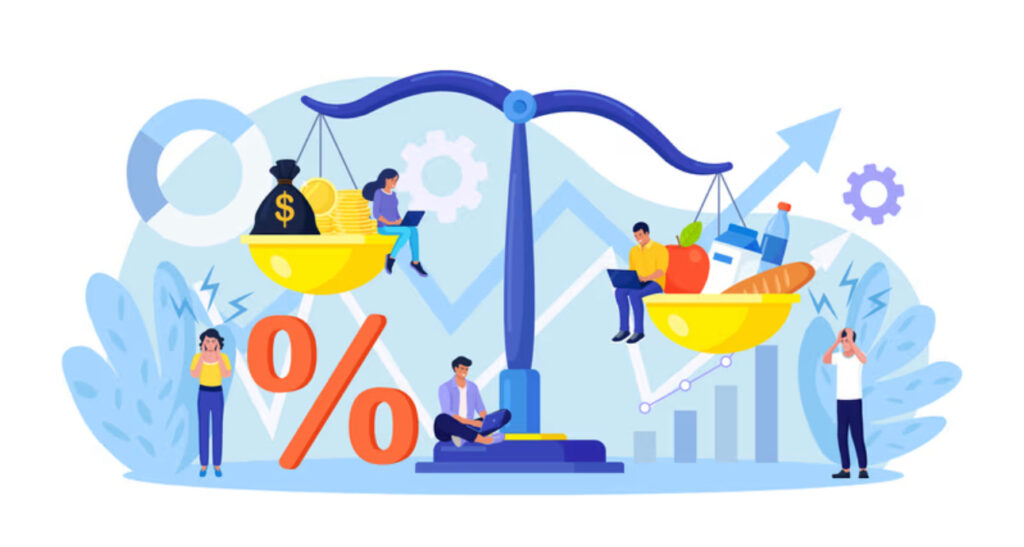When Everyday Credit Becomes a Risk to Urban Stability.
In the busy streets of Accra, a young executive assistant enters a local waakye spot. Instead of paying immediately, she enters a code and chooses Credit, a Buy-Now-Pay-Later (BNPL) plan. The cost? Around 40 Ghana cedis, divided over four weeks. It’s a small amount for a simple meal. Yet, in that moment, we catch a glimpse of a quiet revolution reshaping urban life in Ghana. BNPL is now woven into everyday life. It’s no longer just for smartphones or cars; it’s financing school uniforms, groceries, and even basic health treatments. This shift is steadily changing the pace of city living and has given rise to non-banking credit and loan institutions. Admittedly, I run a microfinance enterprise myself, although I am not promoting it as much as my other businesses, yet (www.WellMaxCredit.com). So, believe me when I tell you, the moment people hear an interest rate twice the national GRR, it’s already a yes. Globally, the BNPL industry is expected to surpass US $560 billion in 2025 (FinTech Futures, 2025). In Africa, the model’s appeal is clear: low barriers to entry, mobile-first interfaces, and a generation increasingly comfortable with digital finance (Mastercard BNPL in Africa Report, 2024). However, with opportunity comes risk, and the stakes for African cities are uniquely high. Why BNPL is booming in African cities Three forces are driving the BNPL surge across the continent. Smartphone penetration Affordable devices and mobile internet have given millions access to digital marketplaces where BNPL is baked into checkout processes (Mastercard BNPL in Africa Report, 2024). Informal economies A large share of urban workers operate outside formal banking systems. BNPL offers them flexible, low-friction access to goods and services (McKinsey Informal Economy Trends Report, 2024). Cultural aspirations Rising urban populations, fuelled by a young demographic, are eager to access modern lifestyles, and BNPL makes aspirational spending feel attainable. Companies are tailoring BNPL models for local realities, targeting everything from laptops to fertiliser. Yet, beneath this innovation lies an uncomfortable truth: when we have to access our basic essential purchases through financing, it is a sign that the social fabric is under significant stress. The danger of normalising debt for survival Historically, credit served as a lever for investment, like financing a house, an education, or a business. Today, BNPL is increasingly used for essential spending: meals, work shoes, and utility bills. This shift is subtle but profound. It risks creating a new class of “credit-dependent citizens” whose monthly budgets are built on fragmented, deferred obligations. In Accra, informal surveys estimate that up to 30% of BNPL users have at least three concurrent instalment plans (McKinsey Informal Economy Trends Report, 2024). Many rotate repayments to stay afloat, effectively juggling micro-debts to maintain a semblance of normalcy. Without careful regulation and financial education, this could spiral into systemic fragility. I have discussed this with the Micro-Credit Association of Ghana. There is strong interest in exploring nationwide frameworks for responsible BNPL lending and linking it to broader financial inclusion goals. BNPL’s impact on urban resilience Why does this matter beyond individual households? It’s because financially vulnerable citizens weaken the economic resilience of entire cities. This erosion manifests in multiple, interconnected ways that quietly but decisively destabilise the foundations of urban life. Lower household savings When instalments consistently eat into future income, families are left with little or no capacity to absorb financial shocks. This leaves them vulnerable to emergencies and everyday fluctuations: a rise in food prices, a sick child, or a delayed salary. Over time, this erodes intergenerational wealth as parents struggle to save for their children’s education or invest in long-term goals. Weaker consumer confidence In an environment where BNPL obligations already fragment disposable income, consumer spending becomes reactive rather than strategic. People buy only what they need immediately, often in smaller quantities, which reduces bulk purchases and negatively impacts overall business margins. This volatility makes it more challenging for SMEs to forecast demand, manage inventory, or access credit effectively. Higher mental health burdens The emotional toll of juggling repayments, dodging defaults, and living under constant financial uncertainty is severe. Persistent financial anxiety is closely linked to depression, low self-worth, and in some cases, substance dependency (World Health Organization, 2024). As stress compounds, it can affect productivity at work, relationships at home, and even physical health. Reduced civic engagement Citizens trapped in a cycle of economic survival have reduced time and energy for community life, whether it’s volunteering, attending town meetings, or participating in local initiatives. This undermines social cohesion and trust, both of which are essential for stable, resilient urban environments. Urban fragility doesn’t begin with crumbling roads or traffic congestion. It begins with individuals forced to navigate daily life without the essential cushion of financial security. Cities flourish when people can plan, invest, and dream. Unchecked BNPL dependency transforms ambition into anxiety and undermines the fundamental concept of sustainable urban development. Policy interventions: Building healthy credit ecosystems BNPL is not inherently bad. It can be a powerful tool for inclusion if managed wisely. However, like any powerful tool, it requires guardrails, feedback loops, and a deep understanding of how it interacts with vulnerable communities. African regulators, FinTechs, civic leaders, and even educators must collaborate to shape an ecosystem that balances access with protection. Cap effective interest rates Some BNPL models mask high fees as “service charges.” These add up quickly, especially when users carry multiple loans. Transparency must be enforced. Clear legal definitions should distinguish between service fees and disguised interest. Policymakers should mandate disclosure of the total cost of credit, perhaps in local languages, using examples that reflect everyday purchases. Mandate plain-language contracts Contracts must be readable at a secondary school level and structured so that the most critical terms (interest rate, penalties, duration) appear upfront. A consumer should not need a lawyer to understand a loan agreement. Regulators might also explore using iconography and simplified “credit scorecards” so customers can compare offers like they do prepaid bundles. Integrate repayment data into credit bureaus A well-managed BNPL repayment history
When Everyday Credit Becomes a Risk to Urban Stability. Read More »




